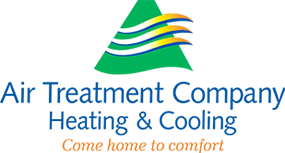Fixing a Problem
Do you need help efficiently heating your home? Unfortunately, air circulation issues are a common problem among homeowners. However, before you take drastic measures such as replacing parts of your household heating system, it is essential to understand the potential causes behind poor airflow - and what steps can be taken to address the issue. In this blog, we will discuss typical causes behind weak airflow and troubleshooting methods that can help restore proper temperature levels in your abode. Read on to learn more!
An Overview of Poor Airflow Issues in the Home
Poor airflow in the home can negatively impact both comfort and health. Furthermore, poor air circulation leads to stagnant air, which can be particularly bad for those struggling with respiratory issues such as asthma. It can also contribute to the buildup of odors, allergens, and other pollutants that can harm your health. In addition, weal airflow can lead to increased humidity levels in your home, creating an environment for mold and mildew growth. In extreme cases, this can even cause structural damage to your home.
Causes of Poor Airflow in the Home
A common cause of poor airflow in the home is obstructions that block the air moving through or out of your air ducts. Cluttered furniture and drapery can block registers, vents, and other sources of ventilation. Additionally, if furniture or carpeting is placed too close to a vent or register, airflow can be impeded.
Similarly, dust buildup on filters and vents and inside ductwork can also restrict airflow. Lastly, your HVAC system’s blower (the part that moves air through your system) may be malfunctioning. If your system has a blower issue, you may experience little to no airflow coming out of your vents.
Troubleshooting Methods to Address Poor Airflow
Poor airflow from a heater can be a frustrating problem. It can cause mold and mildew to grow, create stagnant air that is unhealthy to breathe, and make a space uncomfortably cold. Several troubleshooting methods should be implemented to combat this problem.
First, check your system’s air filter. If it looks clogged with dirt or dust buildup, replace it. Replacing the filters regularly is also an essential preventative measure – it will help maintain your system’s energy efficiency and reduce the chance of the equipment overheating.
Next, inspect your vents for any obstructions that may reduce airflow. This could include furniture blocking register intakes or returns, drapes or curtains covering walls vents, rugs covering floor vents, or even pet hair clogging up the openings. If you find any blockages, it’s important to remove them right away to restore proper airflow throughout your home.
You should also check for any signs of damage on your ductwork system such as cracks or holes allowing air to escape before it reaches its intended destination. If needed, hire an HVAC professional to patch up damaged areas so your air will flow properly.
Finally, inspect your HVAC system for signs of malfunctioning components, such as dirty evaporator coils or the blower not pushing enough air through ducts due to low power output. It’s best to hire a professional contractor if you believe something is wrong with the system itself – they can diagnose and fix whatever issue prevents good airflow from occurring throughout your home or office space efficiently and effectively!
Hire Air Professionals
Airflow is essential for a comfortable and healthy home. Unfortunately, many homes have airflow problems that go unnoticed. In this blog post, we discussed the causes of poor airflow in the home and troubleshooting methods to address the issue. If you suspect your home suffers from poor airflow, try some of these tips, and contact your local home comfort professionals.
At Air Treatment Company, our team always works to ensure you are comfortable in your own home. Learn more about how we can help or schedule an appointment by calling (703) 270-0881 or visiting us online.


